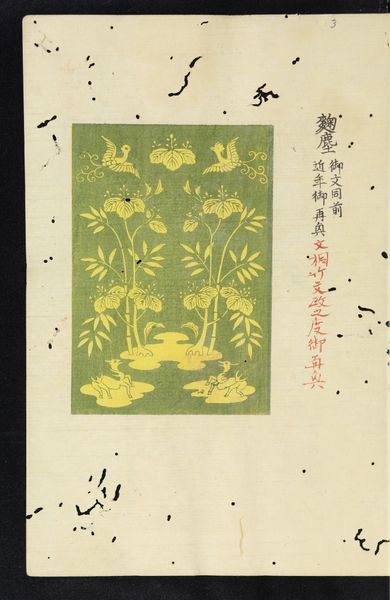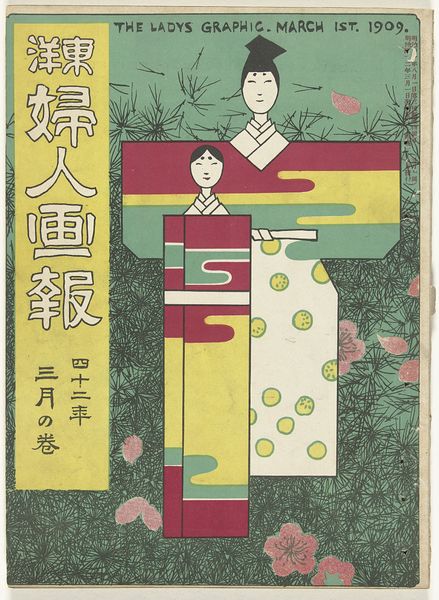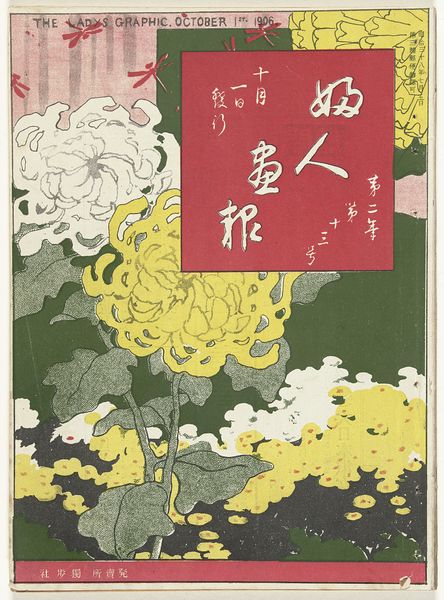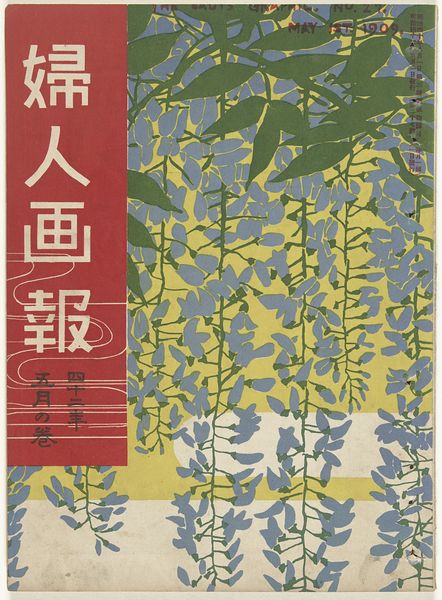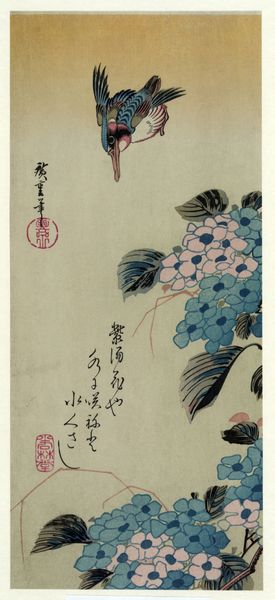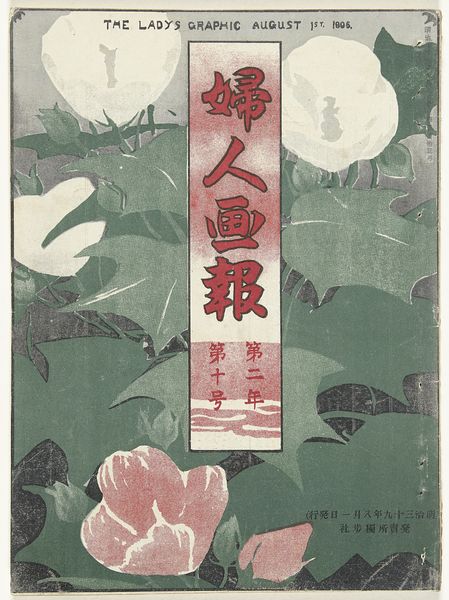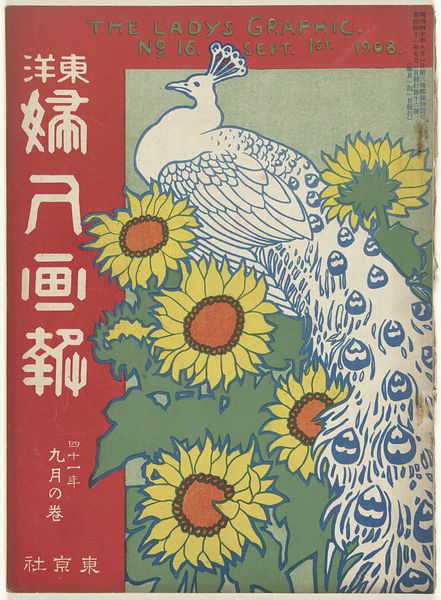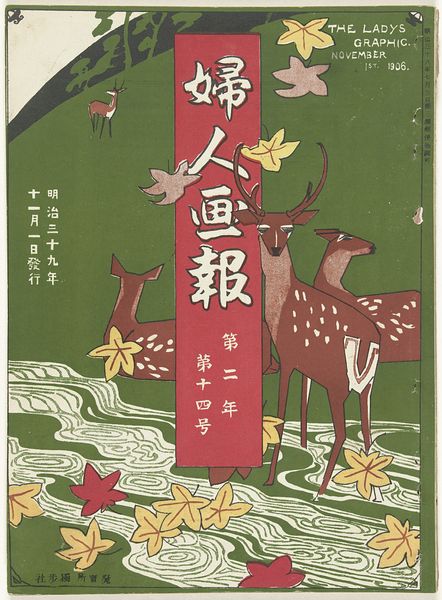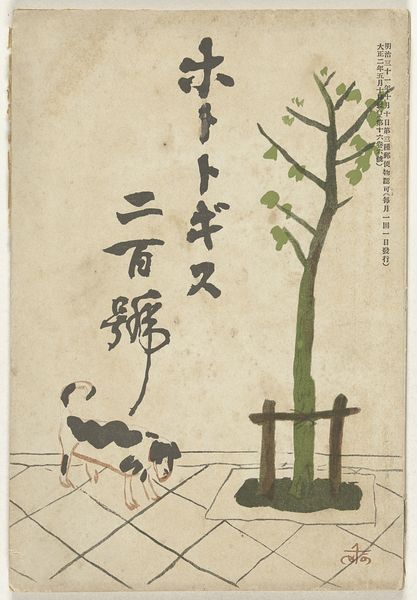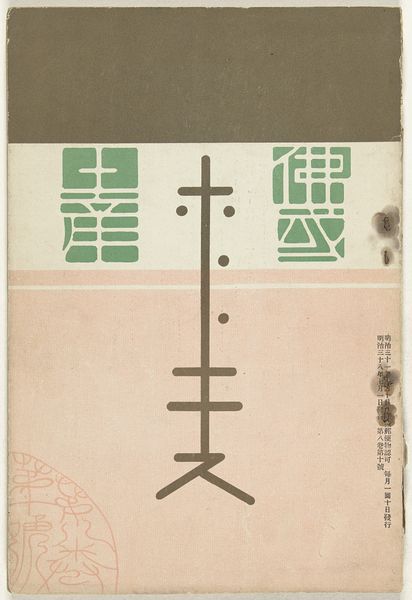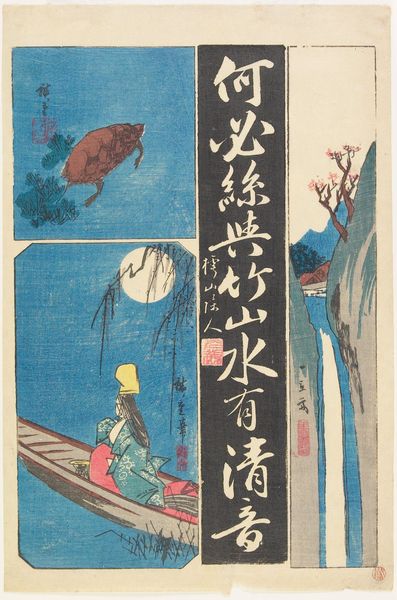
Dimensions: height 255 mm, width 185 mm
Copyright: Rijks Museum: Open Domain
Editor: This woodblock print is titled "Januari 1907" by Mitsutani Kunishiro. I believe it's from 1907, and it almost has a poster-like quality. The image feels both decorative and a bit unsettling, I wonder how to interpret its symbolic purpose. What do you see in this piece? Curator: I see a powerful statement about the evolving role of women in early 20th-century Japan, framed by potent visual metaphors. This work blends the aesthetics of *ukiyo-e* with *art nouveau*, reflecting Japan's embrace of modernity. Notice the magazine's name, "The Lady's Graphic," suggests an emergent readership. Editor: The flowers at the bottom stand out, too; are they daffodils? Curator: Yes, and they were likely a deliberate choice. In some artistic traditions, flowers embody feminine beauty, but in the context of increasing rights of women, could these also symbolize hope and resilience? And note the imagery above...are those clouds or some type of fantastical creature? These ambiguities allow us to question fixed notions about gender. The title's use of the Dutch word "Januari" along with Japanese script speaks to international exchanges during the Meiji period. Editor: So, it's like the artwork acts as a cultural bridge while highlighting social progress. I had thought the flowers were purely decorative, but now I can read them as hopeful. Curator: Precisely. Consider this piece as a mirror reflecting Japan’s dynamic intersection of traditional values and progressive ideals regarding women’s identity. A deeper understanding allows for an expanded definition of traditional art practices. Editor: That's an incredibly insightful interpretation! It's amazing how much history can be embedded within a single print.
Comments
No comments
Be the first to comment and join the conversation on the ultimate creative platform.
